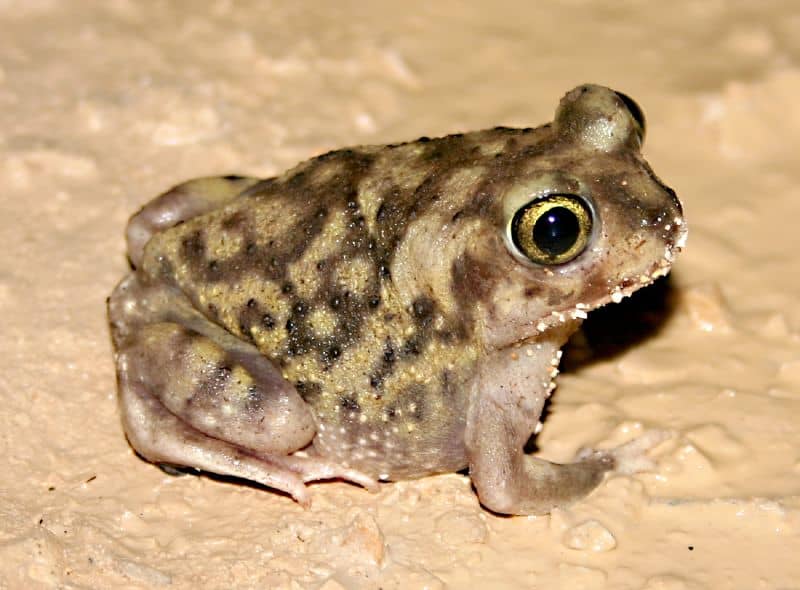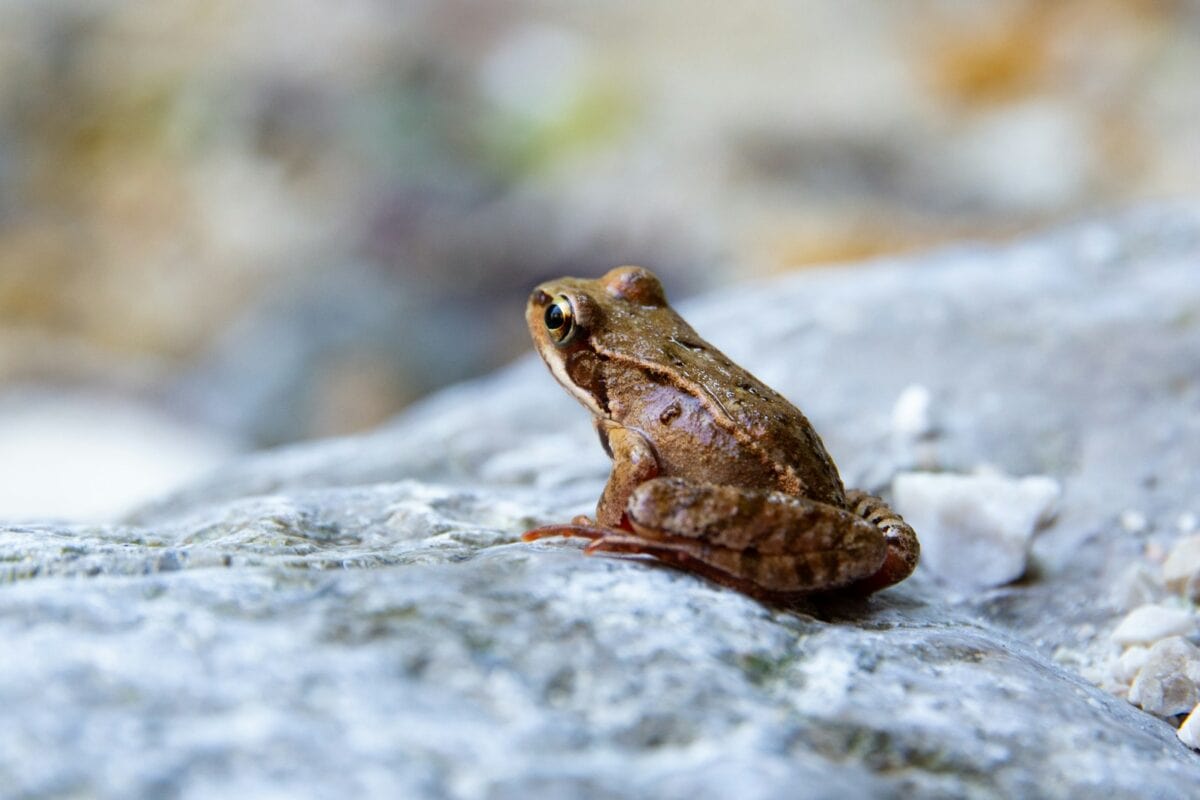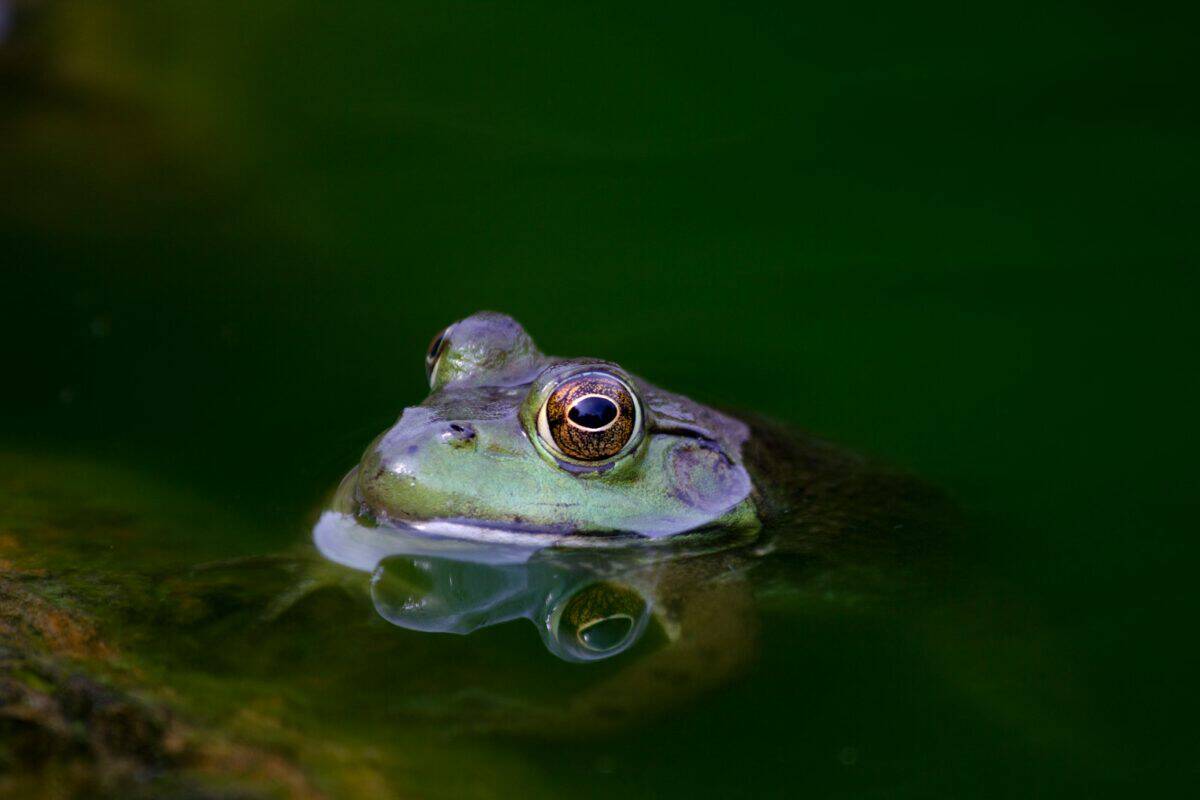In the fascinating world of amphibians, certain frog species have developed extraordinary survival strategies that allow them to endure harsh environmental conditions through extended periods of hibernation—sometimes lasting years rather than just a single season. These remarkable creatures push the boundaries of what we understand about biological dormancy, demonstrating nature’s incredible adaptability. From the wood frogs that can freeze solid yet survive, to desert-dwelling species that can remain dormant for decades waiting for rain, these amphibians represent some of the most resilient vertebrates on our planet. This article explores the incredible biological mechanisms, evolutionary advantages, and fascinating examples of frogs that can hibernate for extended periods, sometimes measured in years rather than months.
Understanding True Hibernation vs. Brumation in Amphibians

When discussing frog “hibernation,” it’s important to clarify terminology. True hibernation is technically a mammalian process involving regulated reductions in body temperature and metabolic rate. What frogs experience is actually called “brumation”—the reptile and amphibian equivalent. During brumation, cold-blooded animals like frogs enter a state of dormancy where their metabolism slows dramatically, but they may still move occasionally and don’t experience the same deep sleep state that mammals do. However, some frog species enter an even more extreme state called estivation (summer dormancy) or cryptobiosis, where their metabolic processes nearly cease altogether, allowing for survival during extended drought periods. These distinctions are important for understanding the mechanisms that allow certain frogs to remain dormant for extraordinarily long periods—sometimes years.
The Wood Frog’s Freeze-Thaw Cycle

The North American wood frog (Lithobates sylvaticus) demonstrates one of the most remarkable hibernation adaptations in the animal kingdom. These frogs can survive being frozen solid for months at a time, with no heartbeat or breathing. When temperatures drop below freezing, wood frogs produce large amounts of glucose and urea in their bloodstream—functioning as natural antifreeze—while permitting ice to form in their body cavities and under their skin. Up to 65% of their total body water converts to ice during winter. Their vital organs are protected by this glucose solution while their hearts stop beating entirely. When spring arrives, they thaw from the inside out and resume normal activity within hours. While wood frogs typically hibernate for a single winter season, research has shown some individuals can survive multiple freeze-thaw cycles over several years if environmental conditions fluctuate unpredictably.
Couch’s Spadefoot Toad: The Desert Sleeper

Among the most impressive long-term hibernators is Couch’s spadefoot toad (Scaphiopus couchii), native to the southwestern United States and Mexico. Despite being called toads, these are members of the Scaphiopodidae family and exhibit truly remarkable survival adaptations. Couch’s spadefoot can remain dormant underground for years—some documented cases suggest up to seven years or more—waiting for substantial rainfall. They burrow deep into sandy soil using specialized “spades” on their hind feet, creating chambers where they enter estivation. During this extended dormancy, they form a protective cocoon of shed skin that helps prevent water loss, while their metabolic rate drops to just 1/50th of normal levels. Their heart rate slows dramatically, and they survive by slowly metabolizing fat reserves. What makes these amphibians particularly impressive is their ability to detect rainfall vibrations while buried, emerging within minutes when sufficient rain finally arrives to breed in temporary desert pools.
African Bullfrog’s Multi-Year Dormancy

The African bullfrog (Pyxicephalus adspersus) is another champion of extended hibernation. These massive frogs—weighing up to 4.5 pounds—inhabit seasonal wetlands across eastern and southern Africa that may dry up for years at a time. When faced with drought, African bullfrogs dig down as deep as two feet underground and secrete a protective mucus cocoon that hardens around their bodies. Inside this cocoon, they can remain dormant for up to five years, waiting for adequate rainfall. During this extended estivation, they retain water in their bladders and specialized sacs while dramatically reducing metabolism. Their skin becomes thicker and more resistant to water loss. Remarkably, parent African bullfrogs have been documented emerging after multi-year dormancy periods and immediately seeking out the temporary pools where they originally laid eggs years earlier, demonstrating not just physiological but behavioral adaptations to extreme environmental cycles.
The Waterproof Cocoon: How Water-Holding Frogs Survive

The water-holding frog (Cyclorana platycephala) of Australia represents one of the most specialized adaptations for long-term hibernation. These remarkable amphibians can survive in Australia’s harsh outback for five years or more without access to water. When drought conditions begin, they burrow into mud that gradually hardens around them. As the mud dries, the frogs secrete a gelatinous substance that forms a waterproof cocoon, leaving only their nostrils exposed. Inside this protective chamber, they can reduce their metabolic rate to just 1/30th of normal levels. Their skin becomes 50 times less permeable to water than in their active state. Most remarkably, these frogs store water in their bladders and specialized skin pockets, gradually reabsorbing it during dormancy. Indigenous Australians historically knew these frogs as valuable emergency water sources during drought—when carefully extracted from their burrows, the frogs could be gently squeezed to release stored water without harming them. This adaptation allows survival during Australia’s unpredictable and extended drought cycles that can last for many years.
Metabolic Shutdown: The Science Behind Extended Dormancy

The ability of certain frog species to hibernate for years depends on remarkable metabolic adaptations. During extended dormancy, these amphibians can reduce their metabolic rates to as little as 1-3% of their normal active state. This extreme metabolic depression requires specialized biochemical pathways that prevent cell death despite minimal oxygen consumption. Their mitochondria—cellular powerhouses—undergo structural changes that minimize energy expenditure while maintaining essential functions. Specific proteins called “chaperones” protect cellular structures from degradation during this period. Additionally, frogs that hibernate for years accumulate high concentrations of urea in their tissues, which helps prevent protein degradation and water loss. Perhaps most remarkably, they can regulate gene expression during dormancy, selectively activating genes that produce protective compounds while suppressing those that would normally control growth and reproduction. These metabolic adaptations represent some of the most extreme examples of biological dormancy in the vertebrate world and are being studied for potential applications in human medicine, particularly for organ preservation techniques.
Frozen in Time: Cellular Adaptations Against Ice Damage

For frogs that hibernate in freezing conditions for extended periods, preventing lethal ice damage to cells requires specialized adaptations at the cellular level. Species like the wood frog and the spring peeper (Pseudacris crucifer) produce cryoprotectants—molecules that prevent ice crystal formation inside cells. These include high concentrations of glucose, glycerol, and specific proteins that function as biological antifreeze. During multiple-year freezing cycles, these frogs can accumulate glucose levels up to 50 times higher than their normal state. Their cell membranes also undergo compositional changes, incorporating more unsaturated fatty acids that remain flexible at lower temperatures. Additionally, they produce specialized ice-binding proteins that control ice crystal growth, ensuring crystals form in extracellular spaces rather than within cells. Perhaps most remarkably, these frogs can shut down and restart their cellular metabolism repeatedly over multiple years without sustaining cumulative damage. Research has shown that wood frogs in Alaska can survive being frozen solid for more than seven months per year and can repeat this process for consecutive years with minimal cellular degradation—a feat that continues to fascinate cryobiologists studying mechanisms to preserve human tissues.
The Tibetan Plateau Frog: High-Altitude Hibernation Champion

The Tibetan plateau frog (Nanorana parkeri) represents one of the most extreme hibernation specialists, surviving at elevations above 15,000 feet where temperatures remain below freezing for most of the year. These frogs can hibernate for up to nine months annually and, in particularly harsh climatic cycles, may remain dormant for multiple consecutive years with only brief active periods. They create hibernation chambers beneath rocks in shallow waters that don’t completely freeze. Their blood contains specialized hemoglobin variants that function efficiently at near-freezing temperatures and low oxygen levels. Unlike many hibernating frogs that bury themselves in mud or soil, Tibetan plateau frogs often hibernate in groups, sometimes stacked atop one another in rocky crevices. Research indicates they can reduce their heart rate to just 1-2 beats per minute during extended dormancy periods. Most remarkably, these frogs have adapted to function in a perpetual state of hypoxia (low oxygen) due to the high altitude, and their cellular metabolism has evolved unique pathways that require minimal oxygen. During particularly harsh climatic periods recorded in the Tibetan plateau, these frogs have been documented remaining in hibernation for up to 23 months continuously.
The Gray Treefrog’s Glycerol Solution

The gray treefrog (Hyla versicolor) employs a different strategy for multi-year hibernation compared to ground-dwelling species. Instead of burrowing underground, these frogs often hibernate in hollow trees, rock crevices, or under leaf litter—sometimes for extended periods spanning multiple years during abnormal climate patterns. Their primary cryoprotectant is glycerol rather than glucose, which provides superior long-term stability during extended freeze-thaw cycles. Gray treefrogs can convert up to 20% of their total body weight to glycerol during preparation for hibernation. This adaptation allows them to survive being frozen at temperatures as low as 18°F (-8°C) for extended periods. What makes their hibernation strategy particularly noteworthy is their ability to partially thaw during brief warm spells and then refreeze without damage—a cycle that can repeat dozens of times during a single extended hibernation period. In northern parts of their range, gray treefrogs have been documented hibernating for up to 20 consecutive months during unusually extended winters, demonstrating remarkable resilience to unpredictable climate patterns. Their glycerol-based protection system is being studied for applications in medical cryopreservation technologies.
Climate Change and Extended Frog Hibernation

Climate change is creating significant challenges for frogs that rely on extended hibernation periods for survival. Unpredictable weather patterns can trigger premature emergence from hibernation, depleting energy reserves and exposing amphibians to freezing conditions without adequate preparation time. Research monitoring wood frogs in Alaska has documented instances where frogs emerged during unseasonable January warm spells, only to be caught in subsequent freezing conditions without having rebuilt their glycogen stores. For desert-dwelling species like spadefoot toads, climate change is extending drought periods beyond even their remarkable tolerance limits. Some populations of Couch’s spadefoot toads have experienced documented declines when dormancy periods exceeded their evolutionary adaptations, lasting beyond seven years. Conversely, in some high-altitude regions, shortened winter periods are reducing hibernation duration, forcing species like the Tibetan plateau frog to be active for longer periods in habitats with limited food resources. Scientists are actively monitoring how these hibernation specialists adapt to changing climate patterns, as they represent important bioindicators of ecosystem health and stability. Some research suggests certain species may be evolving even more efficient dormancy mechanisms in response to these changes, though adaptation rates may not match the pace of climate shifts.
Record-Holders: The Longest Documented Frog Hibernations

While specific dormancy periods vary based on environmental conditions, several frog species hold remarkable records for extended hibernation. The Australian water-holding frog (Cyclorana platycephala) currently holds the verified record for longest dormancy in laboratory conditions, with specimens remaining inactive for 7.5 years and successfully reanimating when exposed to water. In natural settings, the most impressive documented case involves a collection of Couch’s spadefoot toads discovered during construction excavation in Arizona that showed evidence (through growth ring analysis similar to tree rings) of having remained dormant for approximately 11 years during an extended drought period. The African bullfrog (Pyxicephalus adspersus) has been documented surviving dormancy periods of up to 7 years in the wild during extended drought cycles in Botswana. Among freeze-tolerant species, the wood frog holds records for consecutive freezing, with documented cases of individuals surviving three consecutive years with only brief active periods of less than two weeks between winter dormancy phases. These extreme cases demonstrate the remarkable plasticity of amphibian biology and represent some of the most extreme examples of vertebrate survival under adverse conditions.
The Future of Research on Long-Term Hibernating Frogs

Frogs capable of multi-year hibernation have become increasingly important research subjects across multiple scientific disciplines. Medical researchers are studying the cryoprotective compounds these amphibians produce for potential applications in organ preservation for transplantation—particularly their ability to prevent ice crystal formation and cell membrane damage. Molecular biologists are mapping the gene regulation pathways that allow these frogs to effectively “pause” metabolic processes without cellular degradation, which may have implications for treating degenerative diseases. Conservation biologists are using these extreme hibernators as indicator species for monitoring ecosystem health, as their survival depends on specific environmental conditions remaining within certain parameters. Perhaps most intriguingly, space agencies like NASA have funded research on long-term hibernating frogs as models for potential human stasis during extended space travel. The water conservation mechanisms of desert-dwelling frogs are also being studied for potential applications in drought-resistant agriculture. As climate change continues to alter global temperature and precipitation patterns, these remarkable amphibians offer valuable insights into biological resilience and adaptation that may become increasingly relevant for ecosystem management and bioinspired technologies.
Frogs that hibernate for years represent some of nature’s most remarkable examples of physiological adaptation and resilience. These amphibians have evolved complex biochemical, cellular, and behavioral strategies that allow them to essentially pause life processes during adverse conditions, sometimes for periods spanning multiple years. From the freeze-tolerant wood frogs of North America to the desert-dwelling water-holding frogs of Australia, these species demonstrate the extraordinary plasticity of life in responding to environmental challenges. As our understanding of these mechanisms deepens, the potential applications in medicine, conservation, and even space exploration continue to expand. Perhaps most importantly, these remarkable hibernators remind us of nature’s capacity for developing solutions to seemingly impossible survival challenges—adaptations that have evolved over millions of years and continue to evolve as our planet’s climate changes. In studying these masters of dormancy, we gain not only scientific knowledge but also a deeper appreciation for the remarkable diversity and resilience of life on Earth.
- Why Horses Run in Herds – The Science of Their Social Nature - August 23, 2025
- The Arctic Animals That Call Alaska Home - August 23, 2025
- Meet the Burrowing Owls That Call Nevada’s Desert Home - August 23, 2025

